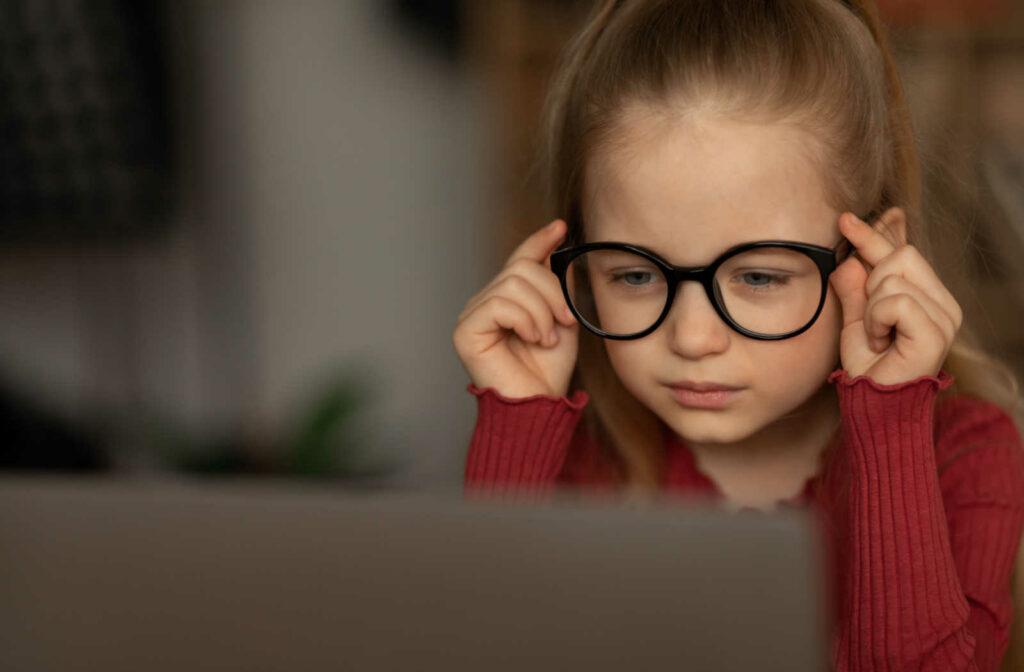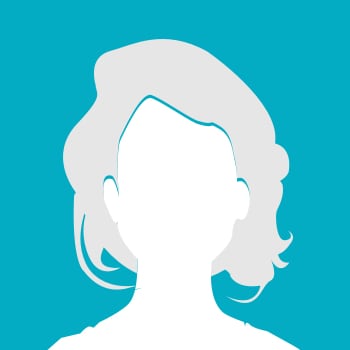Vision plays a crucial role in a child’s development, learning, and overall quality of life. As parents, we monitor our child’s growth and development.
Like how we take our children to annual doctor visits, it’s equally important to schedule regular eye exams to maintain visual health and help prevent poor vision. But how often should your child get an eye exam?
Children should have an eye exam in their first year of life, before grade 1, and yearly until adulthood.
The Importance of Early Eye Exams
Regular eye exams during childhood can help detect and address vision issues early on so that potential problems do not hinder their overall development and success. Children need the following skills for visual learning:
- Visual acuity at all distances
- Accurate eye teaming
- Accurate eye movement
- Accurate focusing skills
Children’s eyes and vision continue to change as they develop. The recommended way to detect vision problems in your child is through an eye exam, as children may not know their vision is not normal or optimal.
Parents can look out for the following signs of vision problems in their children:
- Sitting close to the TV
- Holding books too close
- Squinting
- Tilting their head
- Covering one eye
- Frequent eye rubbing
- Short attention span
- Eye turning in or out
- Light sensitivity
- Poor eye-hand-body coordination
- Avoiding detailed activities
While these signs may not always indicate a vision problem, a comprehensive eye exam can help rule them out. Eye exams aren’t only to test for 20/20 vision or visual acuity. They can also help detect other vision problems, such as:
- Refractive errors: Blurry vision near, far, and at all distances. Common refractive errors include nearsightedness, farsightedness, and astigmatism.
- Amblyopia (lazy eye): Poor vision in one eye from a breakdown in how the brain and eye work together.
- Strabismus (crossed or misaligned eyes): When one eye goes inward and the other outward. It usually develops in babies but can correct on its own. Untreated strabismus can lead to amblyopia.
- Color blindness: This can be passed down in families. Children with color blindness can’t differentiate between certain colors.
When to Schedule Your Child’s Eye Exam
The American Optometric Association recommends that babies and children follow a schedule for eye exams at different ages.
Infant Eye Exam
Infants should receive their first comprehensive baseline eye exam between 6 and 12 months. During the examination, an eye doctor will assess their eye health and visual development.
During this time, babies develop a 3D view of things, vision at varying distances, and color vision. An eye exam at this stage can also detect any early signs of potential vision issues for appropriate interventions, such as:
- Excessive tearing
- Red or encrusted eyelids
- Constant eye turning
- Extreme sensitivity to light
- White pupil
Preschool-Aged Eye Exam
Preschool-aged children should have an eye exam between 3 and 5 years. Regular check-ups are essential during this time as the visual system develops rapidly.
Early detection is important to help prevent the long-term effects of conditions that may impact a child’s learning abilities and academic performance. Parents can look for difficulty recognizing colors, shapes, letters, and numbers.
School-Aged Eye Exam
School-aged children should have an eye exam before starting first grade and annually in the following years. Myopia, or nearsightedness, is a refractive error typically diagnosed in early childhood.
In today’s digital era, more children spend time in front of screens and electronic devices. Prolonged screen time and lack of outdoor play can lead to eye strain. Regular eye exams can help identify and manage these issues, providing guidance on healthy screen habits and ensuring optimal visual health.
Catching myopia in the early stages can help slow its progression to prevent sight-threatening problems later in life. Slowing myopia progression can include corrective lenses, such as glasses or contact lenses.
Parents can look for the following signs of vision problems in school-aged children:
- Complaints of discomfort
- Eye fatigue
- Frequent eye rubbing
- Frequent blinking
- Short attention span
- Avoiding reading and other close activities
- Frequent headaches
- Covering one eye
- Tilting the head to one side
- Holding reading materials close to the face
- Double vision
- Losing place when reading
- Difficulty remembering what they read
In addition to regular eye exams, it’s vital to stay vigilant for signs that may indicate a need for immediate attention. Your eye doctor may recommend more frequent eye exams for your child if they are at a higher risk of developing vision problems.
How to Help Your Child’s Vision
While not all eye conditions are preventable because of genetics or family history, there are some things you can do to help protect your child’s vision:
- Play with toys that improve hand-eye coordination
- Paint and draw
- Play catch with a soft, child-safe ball
- Use protective eyewear and a hat when outdoors
- Schedule regular eye screenings and exams
Invest in a Lifetime of Clear Vision
Regular eye exams are an integral part of the overall visual health of your child. By staying proactive and scheduling routine eye exams at the recommended intervals, you can help set your child up for success.
Book your child’s next eye exam with Restore Vision Center today.



